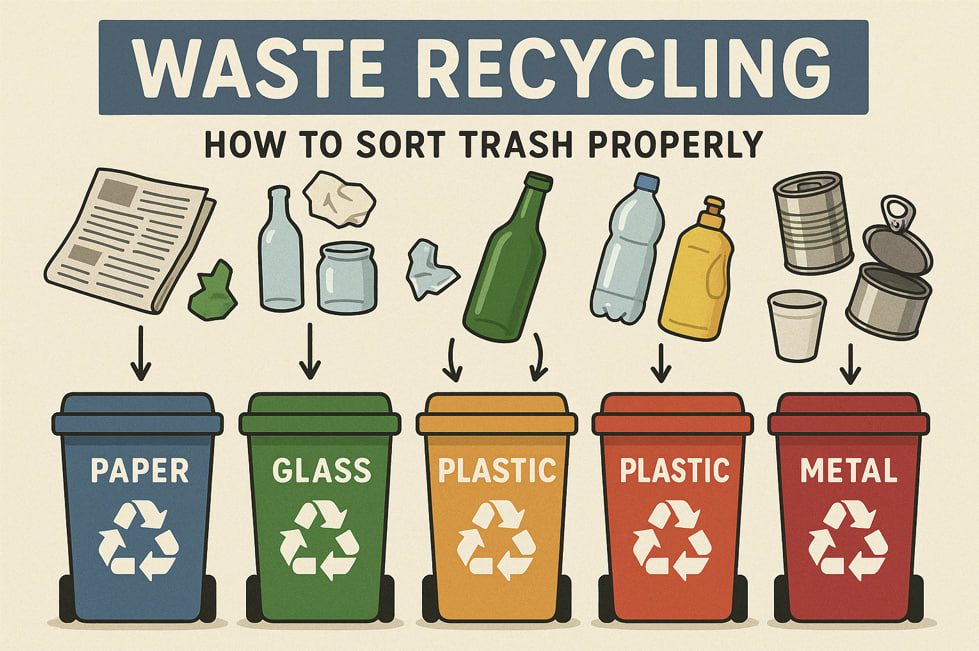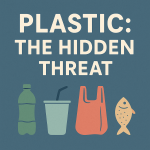Proper waste sorting is one of the most important habits for protecting the environment. By separating waste correctly, we reduce the amount of garbage sent to landfills, lower greenhouse gas emissions, and return valuable materials into production cycles.
Why Sorting Matters
Much of what we throw away can be recycled — paper, glass, metal, and plastic can all be given a second life. But if these materials are mixed with food waste or hazardous items, recycling becomes impossible.
Sorting at the source — directly at home, school, or office — is the most effective and cost-efficient method of managing waste.
Main Waste Categories
Here’s a simple sorting system you can use at home:
Paper and Cardboard
- Newspapers, magazines, notebooks
- Clean cardboard boxes
- Paper bags
Do not include: greasy pizza boxes, used tissues, waxed or dirty paper
Plastic
- Drink bottles
- Clean containers and packaging
Do not include: plastic with food residue, gloves, disposable masks
Metal
- Food cans
- Aluminum soda cans
Do not include: dirty foil, batteries
Organic Waste
- Fruit and vegetable scraps
- Eggshells
- Coffee grounds
Important: Use a compost bin or drop-off point for food waste
General Waste
- Diapers, mirrors, broken ceramics
- Multilayer packaging (e.g. chips bags, foil-coated)
How to Start Sorting Waste at Home
- Set up separate bins. Label them: paper, plastic, metal, organics, general waste.
- Rinse containers. Clean recyclables are more likely to be accepted.
- Check packaging symbols. Many items have recycling codes (e.g. 1 – PET, 2 – HDPE).
- Research local rules. Every city has its own recycling guidelines.
Where to Take Sorted Trash
- Local recycling bins in your neighborhood
- Eco-points or mobile waste collection stations
- Return programs at stores (for batteries, bulbs, electronics)
Glossary
Waste sorting – the practice of separating waste materials by type to enable proper recycling or disposal.
Organic waste – biodegradable materials from plants or animals that decompose naturally.
Composting – a natural process where organic waste turns into nutrient-rich soil.
Plastic codes (1–7) – numbers that indicate the type of plastic used in an item (e.g. PET, HDPE, PP), which affect recyclability.
Recycling cycle – the process of collecting, processing, and reusing materials to create new products.


